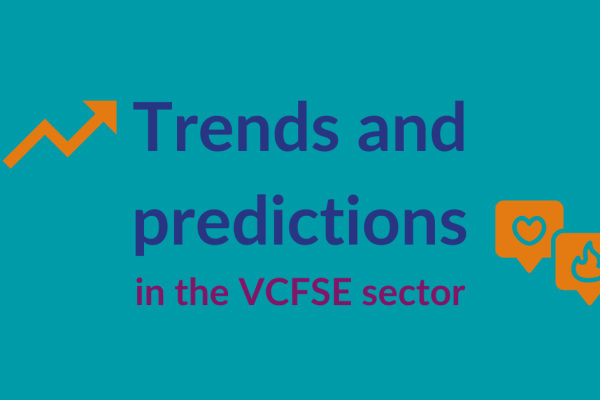We’ve been reflecting on VCFSE sector trends – big and small – we spotted in 2024. And discussing what might happen in 2025 and beyond. Thank you to Mansukh for sparking off this conversation.
VCFSE sector stands for the voluntary, community, faith and social enterprise sector.
1. Pledges to ‘no longer exist’
We are seeing lots of pledges from charitable organisations who want to ensure they are no longer needed in the future. For example, here’s a statement from the anti-poverty and food emergency charity Trussell Trust:
‘We don’t want to be here. It is Trussell’s aim to no longer exist because everyone has enough income to afford the essentials and no one has to turn to emergency food to get by. Until then, we will continue to do all we can to reach people needing our support – and our refreshed brand is key to achieving that.’
2. An increased need for community groups and charities
 3. Increased use of AI (artificial intelligence)
3. Increased use of AI (artificial intelligence)
Marie noted a shift in people’s attitudes towards AI. ‘I’ve met lots of people who had initial resistance to AI who are now cautiously embracing its possibilities. We know we can’t afford to ignore it. But we’re all capable of holding conflicting feelings about things – and that applies so much to artificial intelligence.
4. Increased competition for regional funding
5. Monitoring projects is still very time consuming
6. Discussions around the ability to keep going
7. Using Ticket Tailor for managing events
Manuskh noted that Eventbrite was becoming inaccessible for a lot of organisations. ‘It started to add fees and increase fees for using the platform. Ticket Tailor has and is becoming a popular choice for a lot of other organisations’.
That includes us here at BCM, as well as SCVO (Sandwell Council for Voluntary Organisations).
8. Using Canva for presentations
‘Recently I have seen people using Canva when creating and delivering presentations, instead of Microsoft PowerPoint,’ said Mansukh. ‘I have tested Canva presentations out with my work outside of BCM, and I find it is helpful for allowing various team members to see what is being developed, especially when working remotely. We use Canva at BCM and I think we will look to reorganise our working practices so we can collaborate even more’.
9. Employee-generated social media content
Marie said: ‘Big corporate brands are harnessing the power of employee-generated social media content. I want to get more of the BCM team into our social media posts in 2025 and have you all sharing updates on your day!’
Your VCFSE sector trends
We’d love to hear about VCFSE sector trends you’ve spotted lately. And your predictions for the near future. Contact us on Facebook, Instagram or LinkedIn.
Happy new year!



